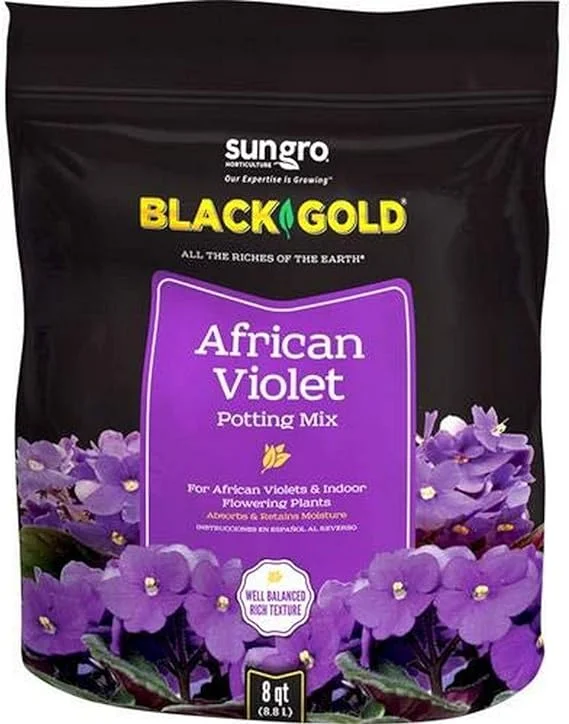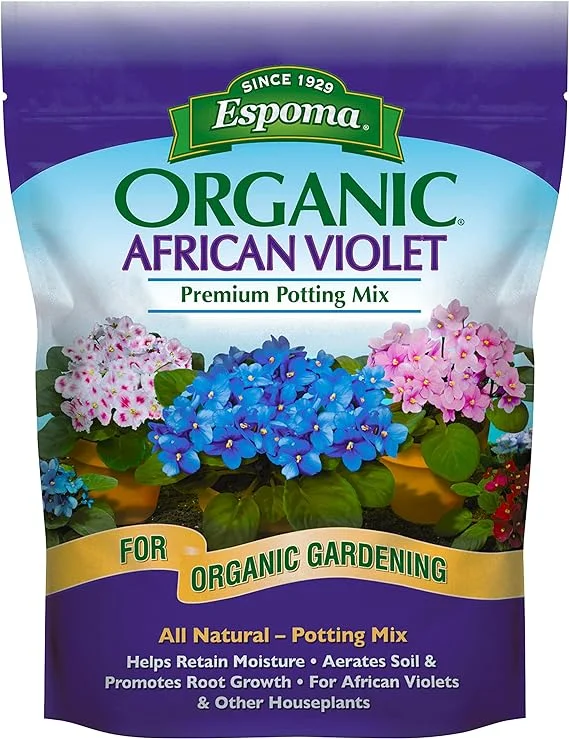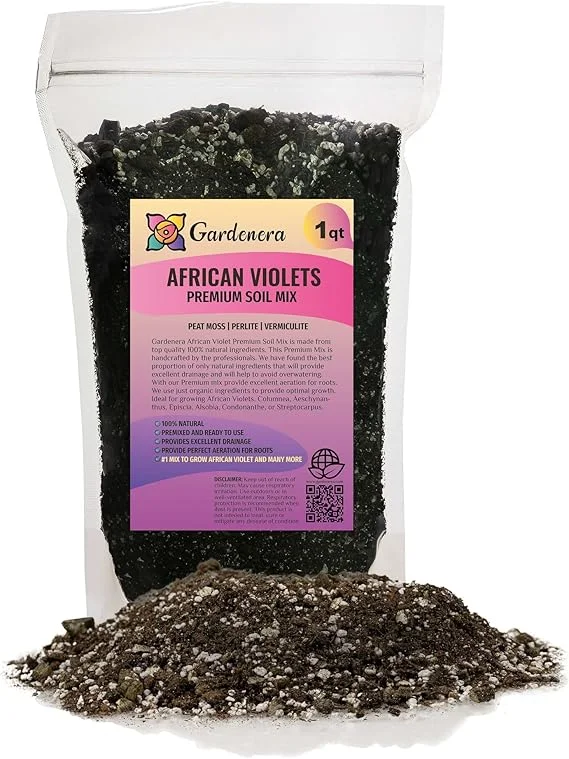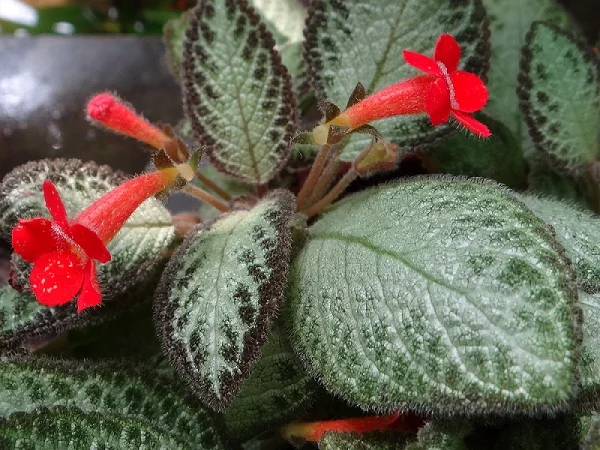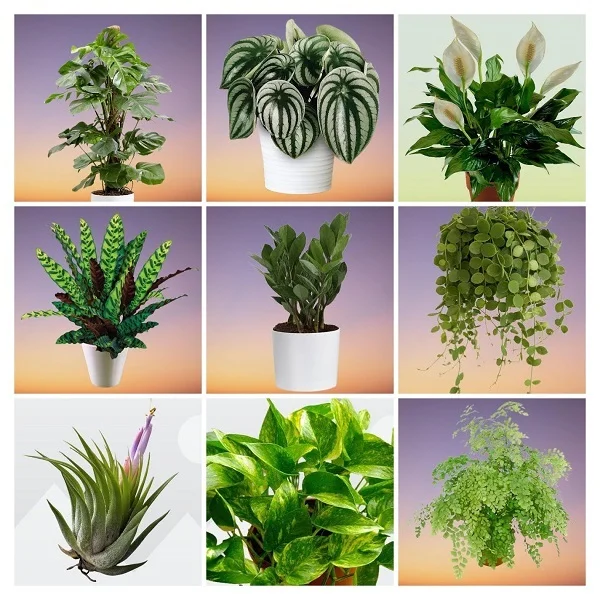Saintpaulia ionantha (African Violet) Indoor Care, Common Problems and Solutions
Some links in this post may be affiliate links
Saintpaulia ionantha (African Violet) grows best in bright indirect light, moderate warmth, average humidity and consistently moist, rich, well-drained soil coupled with fortnighly feeding in the growing season.
African Violet is a compact, easy-to-grow plant. This guide will cover everything you need to know about its care, propagation, and common issues. Let's first delve into some facts about this plant.
Saintpaulia ionantha are among the popular flowering plants on account of their ease of care and ability to flower almost any time of the year.
The compact size and beautiful blooms make African Violets some of the best plants for the limited spaces in the home, office and other ideal places.
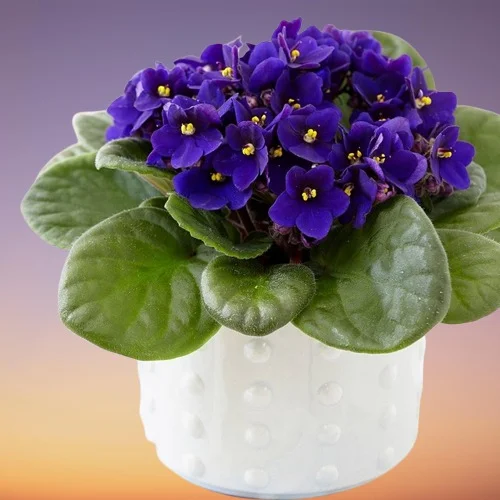
Botanical name: Saintpaulia ionantha
Synonmy: Streptocarpus ionanthus
Family: Gesneriaceae
Common name: African Violet
Origin
African Violet (Streptocarpus ionanthus) is native to eastern and southwestern Tanzania in Africa.
Is African Violet toxic?
Saintpaulia ionantha are non-toxic to both humans and pets as listed by American Society for the Prevention of Cruelty to Animals. African Violets are safe to children, cats, dogs, and other pets.
Related Plants
African Violet care is similar to that of its close relatives Gloxinia (Sinningia speciosa), Cape Primrose (Streptocarpus hybrida) and Flame Violet (Episcia cupreata).
Where to Buy
Would you like to add these plants to your collection? You may obtain magnificent African Violets online from Etsy (Link to Etsy) or from Amazon (Link to Amazon).
How to care for Saintpaulia ionantha indoors
Caring for Saintpaulia ionantha indoors entails giving it bright indirect light, average warmth of 18-240C, humidity of 50-55% and consistently moist, fertile, well-drained soil coupled with fortnighly feeding in spring and summer.
African Violet care requires potting only when it has outgrown its current pot as it blooms best when pot-bound. Regular pruning is necessary to promote flowering and to rejuvenate growth. Keep reading for more on these growing conditions and how to achieve them.
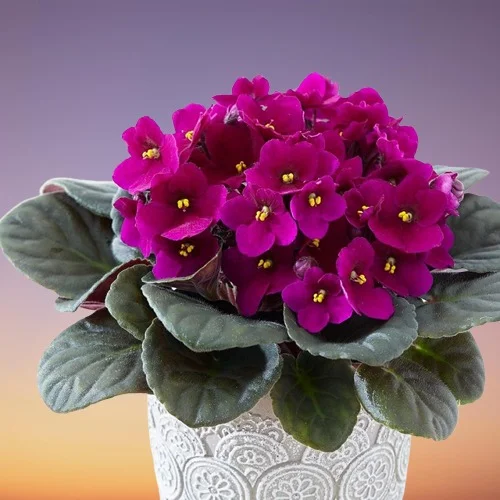
Watering
How often do you water Saintpaulia ionantha?
Do not water Saintpaulia ionantha on a schedule to avoid either overwatering or underwatering both of which are disastrous to the growth of the plant.
Water Saintpaulia ionantha liberally in spring and summer but allow the top 1-2 inches of soil to dry out between waterings. Keep the soil consistently moist but not soggy to prevent yellowing and rotting.
Decrease watering in fall and winter to keep the soil barely moist as growth is minimal at this time. However, do not allow the soil to dry out completely to avoid drooping and dry, crispy leaf edges.
Use water that is at room temperature to avoid shocking the plant as it can lead to reduced growth and leaf drop.
Ensure that the water is free of chlorine and other dissolved chemicals as they can cause brown leaf tips and edges. Use rain water or filtered water to water African Violets.
Avoid wetting the foliage; water from the bottom or use the immersion method. Wetting the foliage can lead to crown and stem rot disease.
Light Requirements
What is the best place to put African Violets?
African Violets thrive in bright indirect light of about 10 hours per day. Put the plant infront of a large, brightly lit window. Do not expose the plant to direct sunlight as it can cause scorching of the leaves; pale, down-curling leaves.
Too little light will result in leggy growth, small pale leaves and fewer flowers. You may grow the plant under grow lights if natural light is not sufficient.
Regularly turn the pot to ensure that the plant gets adequate light on all sides for uniform growth and prevent lopsided growth.
Temperature and Humidity
African Violet prefers average warmth of 18-240C. A temperature that is comfortable for you is ideal for this plant. Keep it away from drafts to avoid extreme temperature as they can cause wilting, pale-green leaves with long stalks and curled leaf edges.
Saintpaulia ionantha has no need for extra humidity. Average humidity of 50-55% is adequate for this plant. However, for lush growth and to reduce pest infestation, set the pot on a wet pebble tray or use a humidifier to increase humidity.
Do not mist the leaves as it can lead to crown and stem rot. Ensure that there is good air circulation to discourage fungal diseases.
Fertilizer
What is the best fertilizer for African Violets?
Feed African Violets every 2-3 weeks in spring and summer with a phosphorous-rich, water-soluble fertilizer to promote flowering. Too much fertilizer may lead to fertilizer burn.
Withhold feeding in fall and winter as growth is slow at this time, therefore, feeding at this time can cause fertilizer burn and death of the plant.
Every 1-2 months, flush out accumulated salts from the soil by running a stream of water through the soil until it comes out through the drainage hole.
Potting Soil
The best potting soil for Saintpaulia ionantha is a light, well-draining soil that retains moisture without becoming soggy. African Violet potting mixes are ideal for this plant.
Repotting
When to repot African Violet
Keep your African Violet pot-bound to promote flowering; it blooms best when slightly pot-bound. Repot (only when pot-bound) in late spring to early summer to hasten establishment as the plant is actively growing at this time.
How do I know if my Africa Violet needs to be repotted?
Signs that your African Violet needs repotting include slow growth, fewer blooms, roots growing through the drainage hole, and drooping leaves even after watering.
How to repot African Violet
- Water the plant one day before repotting to enhance rooting as well as reduce transplanting shock.
- Select a shallow pot which is half as wide as the plant. Make sure that the pot has a drainage hole to prevent rotting. We recommend self watering pots as they help maintain consistent soil moisture.
- Fill the pot a third way with free-draining soil that is rich in organic matter and moisten the soil slightly.
- Carefully, slip the plant out of its current pot, loosen the soil and cut away any dead roots.
- Position the plant in the center of the pot and continue filling while lightly firming the soil around the plant.
- Wet the soil thoroughly and replace the plant to its usual spot.
Pruning & Grooming
Pruning Saintpaulia ionantha involves:
- Removal of spent blooms and any side shoots to encourage development of more flowers.
- Regular removal of dead leaves together with the leafstalk to keep the plant neat and tidy.
- Pinching off the bottom 2-4 leaves monthly to balance out the appearance and to encourage growth of new leaves. The leaves can be used to propagate new plants.
- Cutting back the plant at any time of the year to rejuvenate growth.
Regularly clean the leaves by gently brushing off the dust with a soft brush. Do not wash the leaves as it can result in crown and stem rot.
How do I get my African Violet to bloom?
To get your African Violet to bloom, do the following:
- Position it infront of a large, brightly-lit window or use a grow light to give it bright indirect light of 10-12 hours per day.
- Keep the soil consistently moist in spring and summer and slightly moist in fall and winter. Avoid soggy and dry soil through out.
- Protect it from cold and hot drafts from drafty windows, windy doors, AC units, heat sources and others to maintain a warmth of 18-240C.
- Maintain a humidity of 50-55% and avoid dry air by setting the pot on a wet pebble tray or use a humidifier.
- Feed it with a phosphorous-rich fertilizer every 2-3 weeks in spring and summer but do not feed in fall and winter.
- Avoid too frequent repotting at it blooms best when slightly pot-bound; repot only when extremely root-bound.
- Remove the side shoots so that the plant can divert energy to developing flowers rather than the shoots.
- Routinely check underneath the leaves for pests and carry out timely control measures.
Saintpaulia ionantha Propagation
Saintpaulia ionantha (African Violet) propagation is best done at the beginning of the growing season (spring to early summer) from leaf cuttings, seeds, offshoots or by plant division.
Learn how to propagate Saintpaulia ionantha (African Violet) in 5 easy ways.
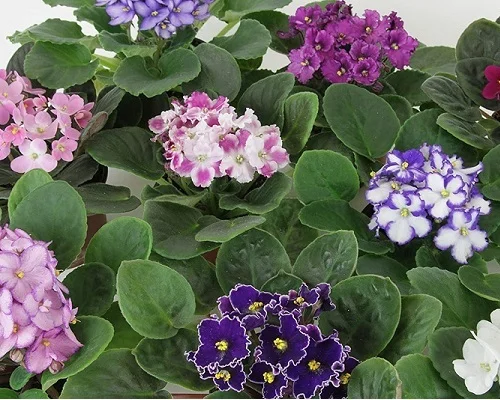
Saintpaulia ionantha Problems & Remedies
Saintpaulia ionantha (African Violet) problems are lack of blooms, plant dying, yellowing leaves, curling leaves, brown leaf spots, pests and diseases among others. Keep reading for more on these problems and how to fix them.
Lack of blooms
Why is my African Violet growing but not blooming?
Your African Violet is not blooming due to too little light, lack of nutrients, dry air, too frequent repotting, improper pruning, and drafts.
How to fix it
Too little light: Position the plant in bright indirect light of 10-12 hrs per day or use grow lights if the natural lighting is not sufficient.
Lack of nutrients: Feed it with a phosphorous-rich, water-soluble fertilizer every 2-3 weeks in spring and summer.
Dry air: Group the plants together, set the pot on a wet pebble tray or use a humidifier to raise humidity.
Too frequent repotting: The plant blooms best when slightly pot-bound; repot only when extremely pot-bound.
Improper pruning: Remove the side shoots to help the plant divert energy to developing flowers rather than the shoots.
Drafts: Keep the plant away from drafts like windy doors, AC units, heat vents, drafty windows and others to maintain an average warmth of 18-240C.
Plant dying
How do I know if my African Violet is dying?
You will know your African Violet is dying when the leaves begin to wilt, droop, turn yellow and is rapidly followed by browning and plant collapse. These are an indication of root-rot disease which is prevalent in soggy soil.
How to revive a dying plant
- Carefully remove the plant from its pot and inspect the roots.
- Trim brown-black mushy roots and treat the healthy roots with a copper-based fungicidal solution as indicated on the label.
- Disinfect the pot with the fungicidal solution or use a fresh pot to repot the plant in fresh, well-draining soil.
- Do not water the plant immediately and keep it dry for 5-7 days before you can resume watering.
- Use a pot with a drainage hole and well-draining soil at all times to prevent the soil from soggy.
- Reduce watering in fall and winter as growth is reduced at this time; maintain the soil slightly moist but not soggy.
Yellow leaves
What turns African Violet leaves yellow?
Some of the causes of yellow leaves on African Violet are dry air, direct sunlight, inconsistent watering, low light, and too much fertilizer.
How to fix it
Dry air Set the pot on a wet pebble tray or use a cool mist humidifier to upscale humidity.
Direct sunlight: Keep the plant away from direct sunlight or use a light curtain to filter the light.
Inconsistent watering: Do not water on a schedule. Water when the top 1-2 inches of soil dry out and do not allow the soil ball to dry out completely.
Low light: Move the plant to a brighter spot or use a grow light for supplemental light.
Too much fertilizer: Take care not to overfertilize; feed every 2-3 weeks in spring and summer.
Curling leaves
Why do African Violet leaves curl down?
African Violet leaves may curl down due cold drafts and direct sunlight.
How to fix it
Cold drafts: Keep the plant away from cold drafts (windy doors, drafty windows, AC units and others) to maintain an average warmth.
Direct sunlight: Shield the plant from direct sunlight by instaling a light curtain or position it in a more shaded spot.
Brown leaf spots
Brown leaf spots on African Violet are caused by water droplets on leaves and use of cold water.
How to fix it
Water droplets: Avoid wetting the leaves or water the plant from the bottom only.
Cold water: Use water that is at room temperature to water the plant.
Pests
Common pests in African Violet are mealybugs, fungus gnats and cyclamen mites.
How to fix it
- Isolate the affected plant to prevent spread to the rest of the plants and treat it with neem oil or insecticidal soap as per the manufacturers' instructions.
- Regularly clean the leaves by damp-wiping with a soft cloth to keep the pests away.
- Reduce watering, use well-draining soil and a pot that has a drainage hole to discourage fungus gnats.
- Keeping the plant well pruned reduces the hiding and breeding places for these pests.
Diseases
Apart from root-rot, other common diseases in African Violet are:
1. Botrytis and powdery mildew which are indicated by moldy leaves and flowers.
How to fix it
- Cut off diseased parts and keep the affected plant warm while ensuring good air circulation.
- Seperate the affected plant to prevent spread to the other plants and spray it with a fungicidal solution. Ensure to follow the manufacturer's recommendations.
- Do not mist the plant as moisture on the foliage creates ideal conditions for these diseases.
2. Crown and stem-rot disease which is characterized by limp leaves and a rotten crown center. It is enhanced by overwatering and wide temperature fluctuations. The disease is infectious and difficult to control.
How to fix it
- Remove and destroy the affected plant as soon as possible to prevent spread to other plants.
- Water only when the top 1-2 inches of soil dry out. Use a pot with a drainage hole and well-drained soil to prevent overwatering.
- Keep the plant away from drafts to avoid temperature flactuations.
Conclusion
To keep African Violet happy; keep it away from cold drafts, remove dead flowers and damaged leaves immediately, do not leave a stalk. Remove side shoots on older plants as soon as they develop to promote flowering. Keep it moderately pot-bound to promote flowering. Use a plastic pot to reduce water loss as they like the soil to be consistently moist.
You liked it? Share on social media.
Related Content
Amazon Associates Disclosure
Homeplantsguide.com is a participant in the Amazon Services LLC Associates Program, an affiliate advertising program designed to provide a means for sites to earn advertising fees by advertising and linking to amazon.com.
